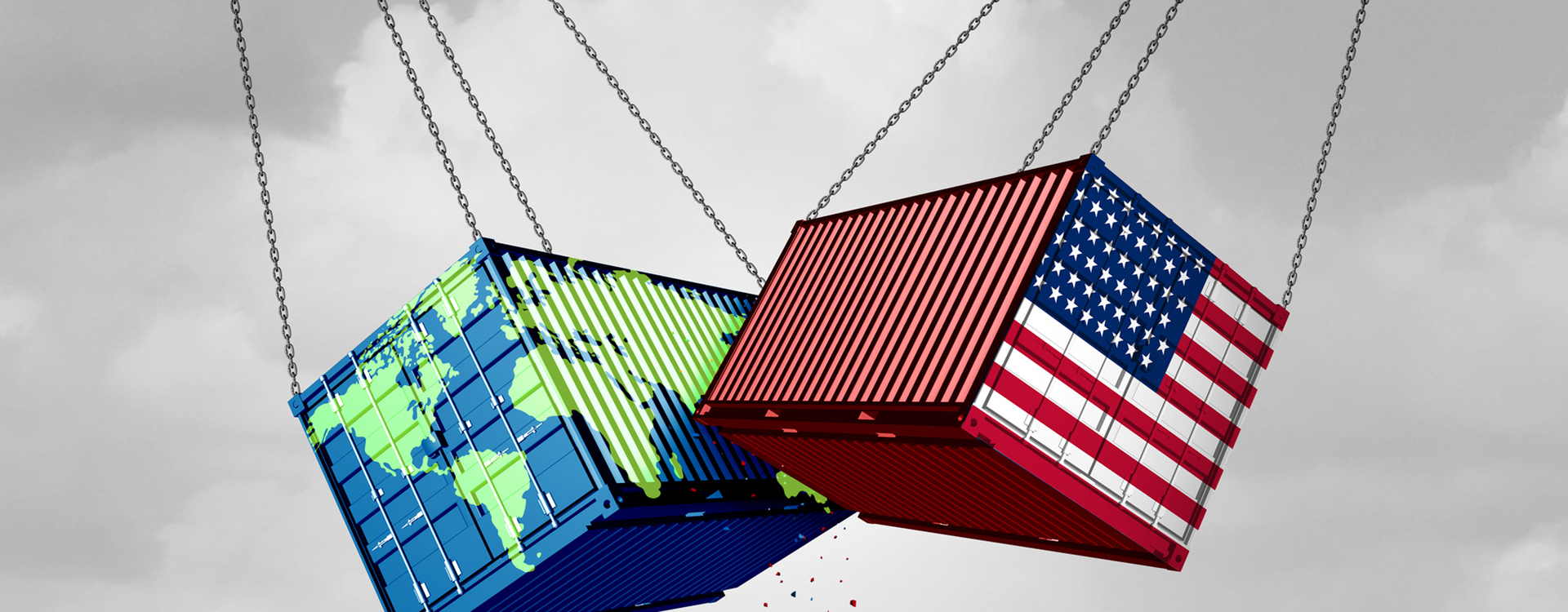Tariffs, Explained — and Explored
Five UC San Diego experts offer insight into how tariffs work, why they’re used, and what their impact is in today’s interconnected world
Story by:
Published Date
Story by:
- Inga Kiderra - ikiderra@ucsd.edu
- Christine Clark - ceclark@ucsd.edu
- Erika Johnson - erjohnson@ucsd.edu
Topics covered:
Share This:
Article Content
Tariffs—taxes placed on imported goods—are one of the oldest tools in the United States’ economic policy arsenal, dating back to the 18th century. Recently they’ve returned to the spotlight in a big way. From steel and solar panels to shoes and semiconductors, tariffs have been used to confront economic rivals, protect domestic industries and respond to shifting geopolitical tides.
The Trump administration reignited widespread use of tariffs starting in 2018, and the Biden administration continued using them as a strategic tool. Since Trump assumed office again in January 2025, there have been multiple tariff actions and policy changes.
So, what are tariffs really doing—for consumers, businesses, the markets and the broader global economy?
To help cut through the noise, we spoke with five UC San Diego experts: two economists, a political scientist, a finance professor and a historian. They offer insight into how tariffs work, why they’re used, and what their impact is in today’s interconnected world.


Tariffs in political context
Lawrence Broz, professor and chair, Department of Political Science, who studies international institutions and global economic governance.
How are tariffs being used today as tools of foreign policy? Are we seeing a broader shift toward protectionism and away from multilateralism?
Yes, tariffs are increasingly being wielded as tools of foreign policy, especially by the U.S., which has imposed sweeping tariffs on imports to address trade deficits and protect domestic industries. In 2025, the U.S. introduced broad “reciprocal tariffs” and targeted measures against countries like China, Canada, Mexico, and the EU, prompting swift retaliatory tariffs from trading partners. This trend reflects a broader global shift toward protectionism and away from multilateralism. Advanced economies are expanding tariffs, subsidies, and industrial policies, often justifying them on the grounds of national security. The resulting tit-for-tat measures and trade barriers are eroding decades of multilateral cooperation and creating levels of economic uncertainty not seen since the 1930s. Ultimately, the erosion of multilateralism threatens the policy predictability and stability that global trade relies on.

The geopolitical implications of tariffs
Caroline Freund, dean of the School of Global Policy and Strategy and former director of trade at the World Bank.
Do you expect the current changes in tariff policies will lead to the re-routing of international supply chains? Who could be the winners or losers in the current trade war?
Yes, we’re already seeing a re-routing of global supply chains in response to tariff shifts and rising geopolitical tensions. Firms are reassessing their exposure to risk and cost—particularly in China—and shifting production to alternative manufacturing hubs. Mexico and Vietnam stand out as major beneficiaries. Mexico offers geographic proximity and preferential access to the U.S. market through the United States-Mexico-Canada Agreement (USMCA), while Vietnam has emerged as a nimble and competitive exporter, especially in electronics and textiles. That said, these shifts don’t happen overnight. The long-term winners will be countries that can offer political stability, trade openness, and an efficient regulatory environment to support global firms looking to diversify.

Tariffs and their impacts on markets
Allan Timmermann, a professor of finance at the Rady School of Management, who studies how markets absorb news and information.
What is your take on the markets’ reactions to changing tariff policies?
After the announcement of the Liberation Day tariffs, U.S. stock markets fell sharply as the prospects of a significant slowdown in international trade, economic growth and, possibly, resurgent inflation worried investors. This drop in prices has subsequently reversed as the likelihood of some of the worst scenarios (like a standstill in trade with China) has receded, though the U.S. dollar remains notably lower.
Financial markets tend not to be particularly accurate at assessing the long-term impact of big political events like the tariff announcement. These events are often without precedents and their impact highly complex. The evolving uncertainty related to how tariff negotiations are progressing is another issue. While it is tempting to say that financial markets over- or underreact to big geopolitical news, it can be extraordinarily complicated to assess what economists call the “general equilibrium” effects of such actions.
Market volatility has been surprisingly subdued in recent weeks in view of the remaining uncertainty related to tariff policies and geopolitics. I expect that this may well change if trade negotiations hit any snags with important deadlines looming on the horizon.

The historical lens
Mark Hendrickson, associate professor and chair of the Department of History, who studies U.S. labor, political economy, public policy, and capitalism in the 19th and 20th centuries.
How have tariffs historically functioned in our country, and are there past moments that can help us better understand what’s happening today?
From the nation’s founding, policymakers used tariffs as a source of much-needed revenue and as a tool to protect domestic producers. By the early 20th century, the introduction of the income tax by way of the 16th Amendment provided a new revenue source for the federal government that reduced the importance of tariffs in funding the government.
The passage of the Smoot-Hawley Tariff Act in the first months of the Great Depression changed things. Initially proposed to protect wool and sugar producers, the final legislation covered hundreds of products and made a bad economic situation worse. In the wake of Smoot-Hawley and the Great Depression, control over tariff policy shifted from the legislative to the executive branch. For decades, this move seemed largely inconsequential as free (or free-ish) trade thinking trumped protectionist ideas, yet in recent years we have seen tariff policy changes with little legislative oversight.

The economics of tariffs
Marc Muendler, professor and chair of the Department of Economics and founding director of the Globalization and Prosperity Lab at UC San Diego, studies global trade and labor markets. He has examined how U.S. tariffs can affect employment and incomes across U.S. states.
Who stands to benefit from tariffs, and who tends to lose? Can tariffs really protect jobs, or do they simply shift economic pain elsewhere?
To give you a quick answer: Moderate tariffs do protect U.S. jobs in industries that matter to us. But when you add up all the economic effects, the typical resident in every single state will see their real income decline under the proposed tariffs. Bringing back some manufacturing jobs is costly to all Americans.
Tariffs may sound like just another tax, and they can help protect certain states with relevant industries by forcing foreign suppliers to cut their prices. But if those price cuts are small and don’t offset the new U.S. tax at the border, downstream customers—like carmakers and shipbuilders who need the steel and aluminum—and consumers like you and me end up paying more.
At the Globalization and Prosperity Lab, we put all these considerations into a state-of-the-art model. The result? A 10%-across-the-board tariff does more harm than good—and it’s even worse if you factor in additional country-by-country tariffs. A few states see short-term job and wage gains, but rising prices quickly eat those up. Real income drops in every single state. A 10% tariff is no longer “moderate” in today’s globally connected economy. And if other countries retaliate, things get worse. Bottom line: what once made sense decades ago is now all pain, no real gain.
For media interested in interviewing these faculty experts: Please reach out to the media contacts listed at top.
You May Also Like
UC San Diego is Strengthening U.S. Semiconductor Innovation and Workforce Development
Technology & EngineeringStay in the Know
Keep up with all the latest from UC San Diego. Subscribe to the newsletter today.



